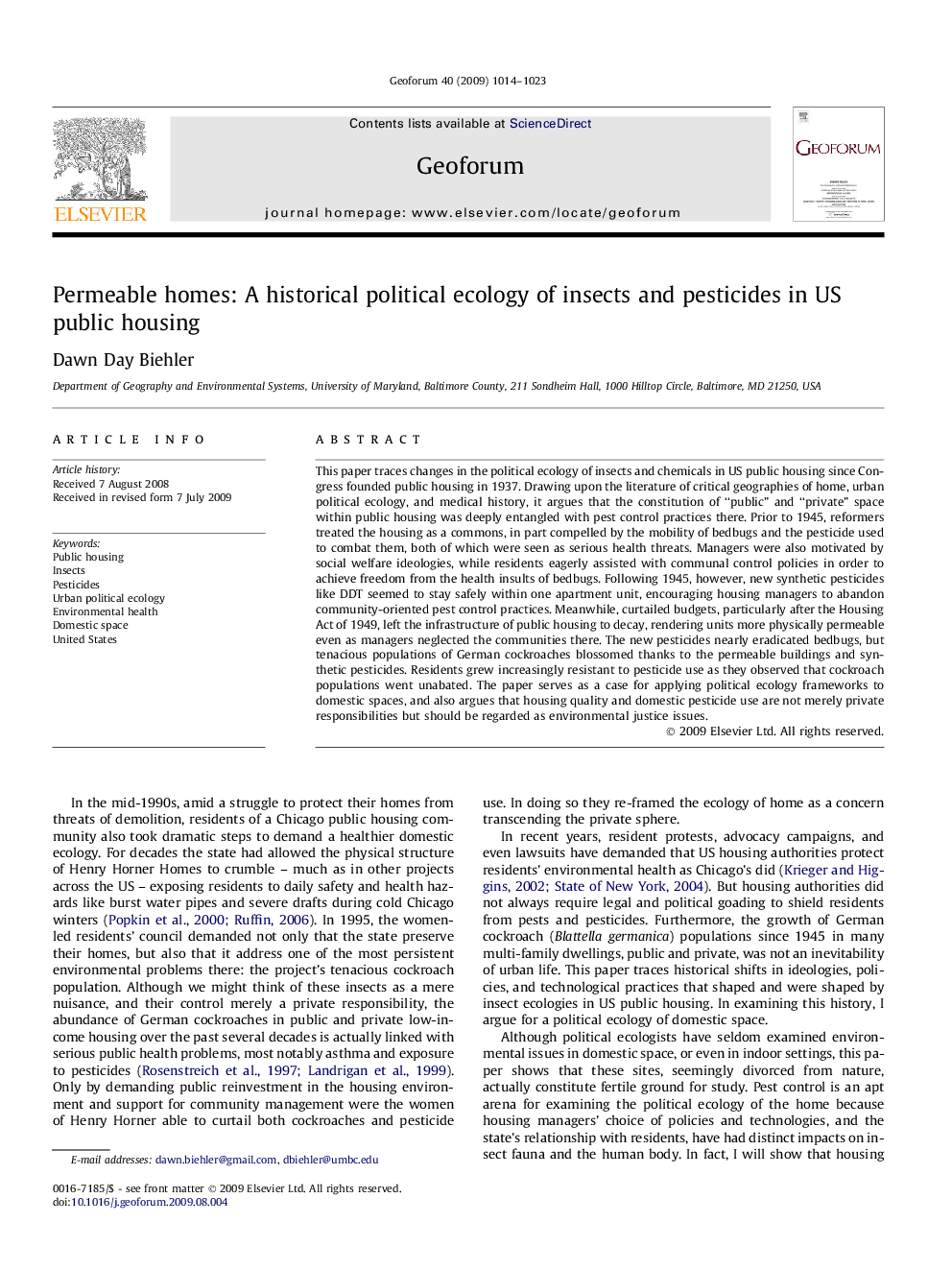| Article ID | Journal | Published Year | Pages | File Type |
|---|---|---|---|---|
| 5074710 | Geoforum | 2009 | 10 Pages |
Abstract
This paper traces changes in the political ecology of insects and chemicals in US public housing since Congress founded public housing in 1937. Drawing upon the literature of critical geographies of home, urban political ecology, and medical history, it argues that the constitution of “public” and “private” space within public housing was deeply entangled with pest control practices there. Prior to 1945, reformers treated the housing as a commons, in part compelled by the mobility of bedbugs and the pesticide used to combat them, both of which were seen as serious health threats. Managers were also motivated by social welfare ideologies, while residents eagerly assisted with communal control policies in order to achieve freedom from the health insults of bedbugs. Following 1945, however, new synthetic pesticides like DDT seemed to stay safely within one apartment unit, encouraging housing managers to abandon community-oriented pest control practices. Meanwhile, curtailed budgets, particularly after the Housing Act of 1949, left the infrastructure of public housing to decay, rendering units more physically permeable even as managers neglected the communities there. The new pesticides nearly eradicated bedbugs, but tenacious populations of German cockroaches blossomed thanks to the permeable buildings and synthetic pesticides. Residents grew increasingly resistant to pesticide use as they observed that cockroach populations went unabated. The paper serves as a case for applying political ecology frameworks to domestic spaces, and also argues that housing quality and domestic pesticide use are not merely private responsibilities but should be regarded as environmental justice issues.
Keywords
Related Topics
Social Sciences and Humanities
Economics, Econometrics and Finance
Economics and Econometrics
Authors
Dawn Day Biehler,
